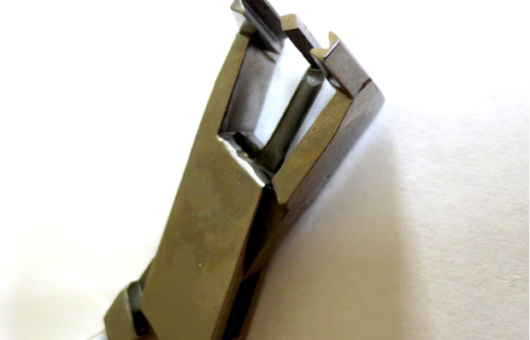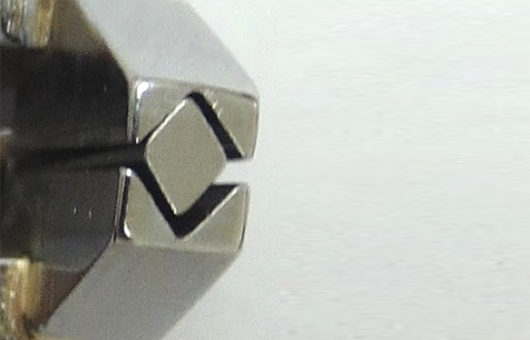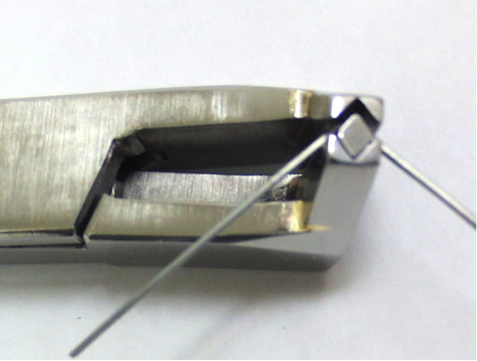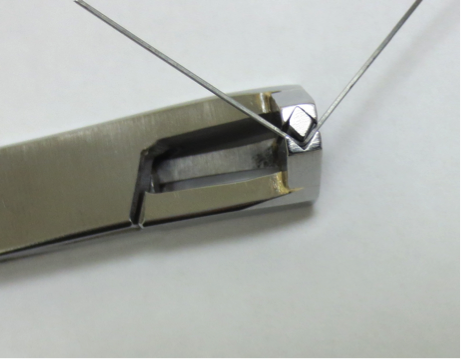THE OMNI PLIERS
Omni pliers is a new generation of Bendistal Pliers, newly patented in in the USA. It is made into ONE pair of pliers that combines the design shapes and all functions of both pair-set of bendistal pliers. A third rhomboid shaped gingival jaw is in the middle between the upper and lower occlusal jaws. This jaw combines the design shapes of the two gingival jaws of bendistal Pliers (back to back). and the occlusal jaws were facing each other on both sides of the gingival jaws, and fit snugly with them when the pliers jaws close.
The gingival jaw moves freely between both occlusal jaws as shown below, to allows the orthodontists place the wires either between gingival jaw and each of the occlusal jaws, to insert the correct orientation of the V-bend that delivers the prescribed force system in a given quadrant.
HOW OMNI PLIERS WORK
These one-paired pliers is designed to exactly resemble the jaws’ shapes and full functions performed by the two-paired of Bendistal Pliers. The three jaws tips (two outer occlusal , and one double ended gingival middle jaws tip), enable clinicians to insert V- bends intra orally in tied archwires in all four mouth quadrants without changing the pliers. Moving the free gingival jaw from one side tho the other allows for placing the archwire between each side of gingival middle jaw and each of occlusal jaws, to get V-Bends opposite to each other, inserted in the designated mouth quadrants. Vertically oriented bends aiming at anterior teeth intrusions, anchorage (molar-tip-back bends), and cinch-back, can be inserted intra orally in all quadrants by moving the gingival jaw between the two occlusal jaws. As a general rule for anterior teeth intrusion purpose, always the tapered tip of the bends must be pointed occlusally in both upper and lower dental arches. Reversing the V-bends will extrude anterior teeth segments. The plier’s tiny tip fits comfortably between brackets for intra oral bending. Transverse bends and step up/down, step in/out, midline and crossbites bends, or customized mushroom lingual archwires can be bent extra orally to patient teeth measurements.
For getting an intrusive V-bend in the upper left mouth quadrant, we place lower occlusal jaw underneath the wire and lower side of gingival jaw above the wire, and squeeze the pliers. While to get an inverted intrusive V-Bend in lower left mouth quadrant, we place the upper occlusal jaw above the archwire, and the upper side of gingival Jaw underneath the wire, and squeeze close the pliers. We follow the same steps to get similar intrusive V- bends orientations in the upper and lower right mouth quadrants.
WARNING
Orthodontists must take their time to familiarise themselves with the precise jaws relation to the wire while inserting the V-bends. This is important to ensure that the resulting V- bend activate the archwires to deliver the prescribed forces for the planned teeth movements in both dental arches. For intrusion of upper or lower teeth the V-bends are placed opposite to each other with the V- bends tips must pointed Occlusally always in both dental arches. Placing wrongly oriented V-Bends meant to intrude anterior teeth, will result in their extrusion instead.



